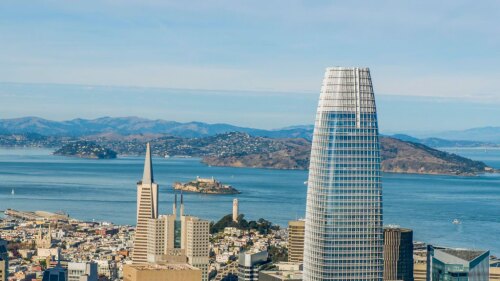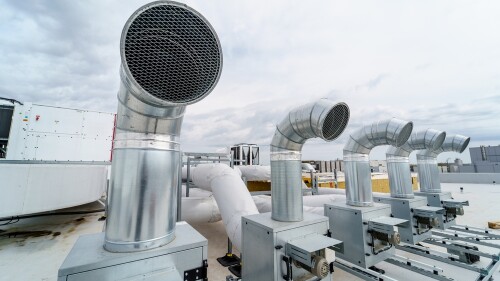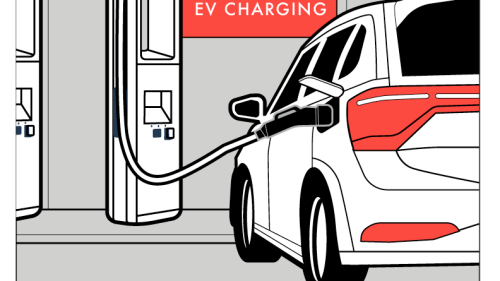With no end in sight to the boom in urban and close-in suburban multifamily housing construction, developers are eager for ways to save money on ever-increasing land and construction costs. So they flocked to the 2016 ULI Fall Meeting session on “Strategies for Urban Apartment Development” featuring Dick Knapp, senior vice president of acquisitions at Foulger-Pratt; Brian Dinerstein, president of the Dinerstein Companies; Bruce Dorfman, managing director with Trammell Crow Residential; and Brandt Bowden, chief investment officer of the Hanover Company.
“There’s been a revolution in high-density, multifamily wood-frame construction, spurred by a key modification to the International Building Code [IBC],” said Knapp, whose company develops in the Washington, D.C., metropolitan area. “This modification allows for up to five stories of wood-frame apartment construction above a concrete slab and up to another three stories below the slab. The slab must have a three-hour fire rating. Anything below the slab must be built of concrete and steel.”
Related: Building the Case for Taller Wood Buildings
The advantage of this predominantly wood-frame construction, Knapp went on to say, is cost savings of about $30,000 per unit when compared with concrete-and-steel high-rise construction (“Type I”). Densities of this seven- to eight-story primarily “stick-built” product can approach those of high-rise buildings: up to 260 units per acre (642 units per ha). With interior features and finishes indistinguishable from those deployed in high rises, these mid-rise apartments can generate comparable rents.
Before this recent code change, only one level could be built below the concrete slab in a configuration known as “five-over-one.” The new code allows for up to three levels to be built below the slab, as long as those levels are “noncombustible” Type I construction (i.e., concrete and steel); the overall building height does not exceed 85 feet (26 m); and the highest occupied floor does not exceed 75 feet (23 m). While “five-over-three” (five wood-framed levels separated by a concrete slab topping three steel-and-concrete levels) is possible, Knapp clarified, “five-over-two” is the easier and more common option.
“Building a high-rise structure does not create high rents; rather, it captures the rents that pre-exist in the marketplace,” Knapp explained. “Supply does not create demand; demand creates supply.” He pointed out that by lowering construction costs with the five-over-two and five-over-three products, developers and owners can achieve project feasibility without necessarily obtaining high-rise rents. In addition to the use of wood instead of concrete and steel, other cost savings can be attributed to reduced emergency safety requirements such as the standpipes, fire command centers, stair pressurization, standby power, and so on that must be included in high rises.
Cost differences between the hybrid model and high-rise construction can be substantial, Knapp remarked. Construction costs for five-over-two or five-over-three product in the D.C. metro area are currently about $138 per gross square foot ($1,485 per gross sq m), as opposed to high-rise costs of $180 to $220 per gross square foot ($1,937 to $2,368 per gross sq m), not including parking.
According to Dorfman, who is based in the San Francisco Bay region, a luxury 35-story high rise in downtown San Francisco was recently bid at $650 per square foot ($6,997 per sq m), while a five-over-three at the same site penciled out to $350 per square foot ($3,767 per sq m). His numbers included parking and were based on net square feet rather than gross square feet, which—along with the West Coast’s underlying cost structure—accounts for the great disparity between the West Coast and D.C.-area estimates.
These numbers led to a discussion of parking in new multifamily residential buildings, especially since parking is a prime use for the levels situated below the concrete slab in five-over-two and five-over-three buildings under the newly revised code. In the Bay Area, Dorfman remarked, underground parking can cost $50,000 per space. “San Francisco limits parking to 0.25 spaces per unit; everyone gets to park one tire,” he deadpanned. “But more and more of our residents don’t have cars. We see fewer 16-year-olds getting licenses, fewer 20-somethings driving, and boomers don’t want to drive either.”
The ULI panelists mulled over what might happen to expensive underground parking once driverless cars take over. Knapp suggested building below the concrete slab parking with the same ceiling heights as apartments, so that the space might be converted into apartments in the future. Lower levels also can be used for retail space, although this use can put pressure on available on-site parking without helping the overall bottom line. In Houston, Dinerstein noted, most residents still rely on automobile transportation, so adequate parking is a must.
Multifamily construction has come a long way, concluded Knapp, from yesteryear’s walk-up garden apartments and the “doughnut,” featuring a structured parking garage surrounded by residential units. Podium and also “hybrid” products—the latter of which comprise a mix of steel and concrete for nine- to ten-story buildings—can offer cost-effective alternatives to costly high rises in all but the densest urban locations.




